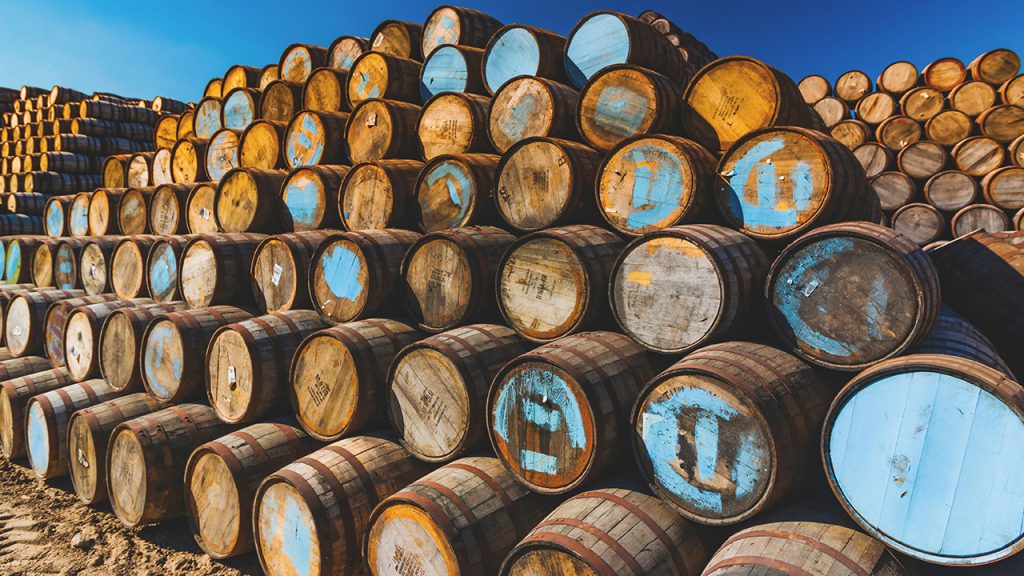 Although most dividends are paid in cash, companies are free to provide their shareholders with any type of dividend they want, including shares of stock or dividends in kind. Although the people on Wall Street often behave like they are a bunch of drunks, that doesn’t mean they are drinking, or that the companies they have ownership in are giving away free liquor, but we have found three cases where that did happen. Two of these, by National Distillers Product Corp. and Park and Tilford, have been covered in other blogs.
Although most dividends are paid in cash, companies are free to provide their shareholders with any type of dividend they want, including shares of stock or dividends in kind. Although the people on Wall Street often behave like they are a bunch of drunks, that doesn’t mean they are drinking, or that the companies they have ownership in are giving away free liquor, but we have found three cases where that did happen. Two of these, by National Distillers Product Corp. and Park and Tilford, have been covered in other blogs.
Whiskey Dividends
On October 15, 1933, shareholders of the National Distillers Product Corp. received a warehouse receipt for 24 pints of 16-year-old whiskey for every 5 shares of stock they owned. The whiskey had sat in a warehouse during Prohibition and with the 21st Amendment repealing Prohibition, the company celebrated by distributing their aged whiskey to shareholders. National Distillers stock rocketed up from 19 at the beginning of 1933 to 111.25 in September 1933 and shareholders not only got free whiskey, but benefited from the dramatic increase in the stock price as well. When the United States entered World War II, the government put a prohibition on the production of whiskey and similar liquors so the alcohol could be used for the production of ammunition and synthetic rubber which could no longer be imported from Japanese occupied Asia. In 1943, this prohibition was lifted and two companies rewarded their shareholders with whiskey they had been ageing in their warehouses. In December 1943, Park and Tilford announced that they were providing shareholders with the right to buy six cases of whiskey at a reduced price. Since the country was fighting World War II and all prices were regulated, the government stepped in to spoil the fun. The Office of Price Administration limited the negotiability of the whiskey purchase rights and the maximum profit on the resale of the liquor. Nevertheless, the price of Park and Tilford stock ran up from 57.625 in December 1943 to 98.25 on May 26, 1944. Park and Tilford took advantage of this increase in the price to sell shares to customers of Ira Haupt & Co. The brokerage unloaded such a large block of shares that the SEC treated the sale as a secondary offering and suspended Ira Haupt & Co.’s membership in the NASD for 20 days for not marketing the shares as such. The third company that distributed whiskey to their shareholders was the Tom Moore Distillery which provided shareholders with 27 original proof gallons of Kentucky bourbon whiskey for each share that they held.Whiskey for Tom Moore
Thomas Selvin Moore was born on March 18, 1853. His family emigrated from Ireland to begin a new life in Kentucky in the 1840s. Tom began working at John D. Willett’s distillery in 1874 and in 1876 Tom Moore and Ben Mattingly began operating Willett’s distillery on their own and changed its name to the Mattingly and Moore Distillery. The distillery was sold to outside investors in 1881, but Moore stayed on to help operate it. In 1899, Moore struck out on his own and purchased 116 acres of land outside of Bardstown at Morton’s Spring in Kentucky to build his own distillery. Initially, Moore was able to mash 100 bushels of wheat daily generating 10 barrels of whiskey. The distillery produced “Tom Moore” “Dan’l Boone” and “Silas Jones” whiskeys. By 1905, the distillery was mashing 300 bushels a day and the warehouses had a capacity of 20,000 barrels. A good wheat bourbon needs to age 12 years or more to reach the right flavor. In 1916, Moore repurchased the distillery he had worked at in Morton’s Spring to expand his production to meet the national demand for his whiskey.
Moore managed his distillery until 1919 when Prohibition was passed and Moore retired. When Prohibition was repealed in 1933, Moore’s son, Con joined with several partners to reopen and expand the distillery so it could age 50,000 barrels. The company continued to operate the distillery until 1944 when Barton Brands bought the company. The distillery was purchased by Sazerac in 2009, and the distillery was renamed the Barton 1792 Distillery. Tom Moore died in 1937 and in 2007, Tom Moore was voted into the Kentucky Bourbon Hall of Fame.
You can still visit the Barton 1792 Brewery in Bardstown, Kentucky, and after the two-hour tour, you can buy souvenirs and get your picture taken in front of the World’s Largest Bourbon Barrel which is over 15 feet tall. That would be enough bourbon to last me a lifetime!


